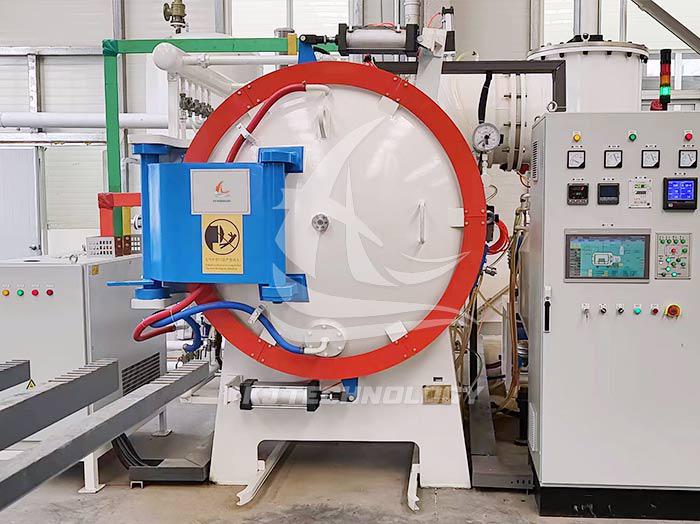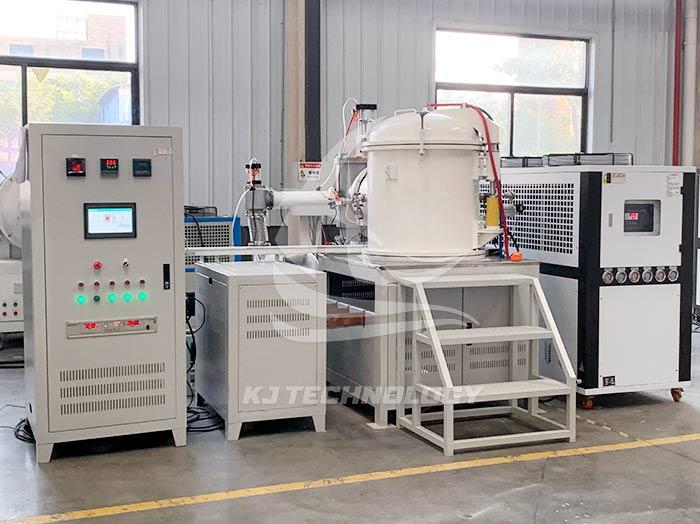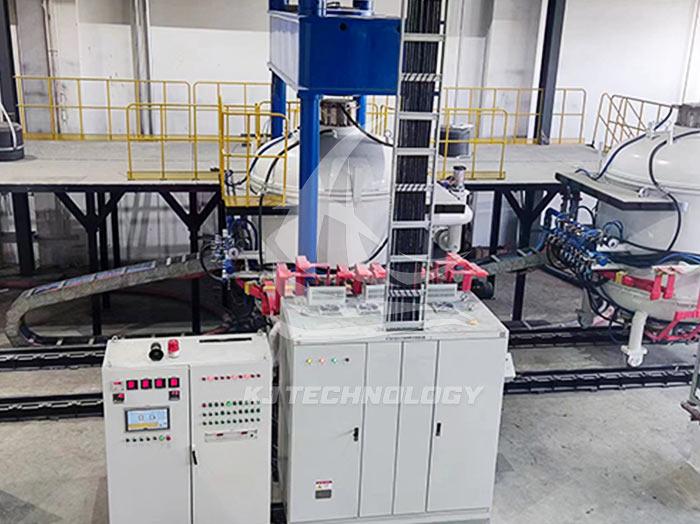What are the characteristics and advantages of vacuum aluminum brazing furnace?
 06-12-2025 Author: KJ technology
06-12-2025 Author: KJ technology
The vacuum aluminum brazing furnace, with its unique technical principles and process design, has demonstrated significant advantages in the field of aluminum alloy welding. Its core features and advantages are as follows:
1. Core Features
Vacuum environment control
Non oxidation welding: By using a vacuum pump to extract air from the furnace, the oxygen content is reduced to an extremely low level (usually below 10 ⁻³ Pa) to prevent aluminum alloy from oxidizing and forming an aluminum oxide film at high temperatures, ensuring the purity of the weld seam.
Anti pollution protection: The vacuum environment can isolate impurities such as nitrogen and hydrogen, prevent the formation of pores or inclusions during the welding process, and improve the welding quality.
High precision temperature control
Multi zone heating system: adopting 6-12 zone independent temperature control design, real-time monitoring of temperature in each zone through thermocouples, ensuring temperature uniformity in the furnace ≤ ± 3 ℃ (some high-end models can reach ± 1 ℃).
Rapid heating and steady-state maintenance: It only takes 30-60 minutes to rise from room temperature to 650 ℃, and can maintain the target temperature stably for a long time, meeting complex process requirements.
Efficient cooling system
Nitrogen forced cooling: After welding is completed, the workpiece is rapidly cooled with high-purity nitrogen gas (≥ 99.999%) at a cooling rate of 5-10 ℃/min, shortening the production cycle.
Circulating water cooling structure: The furnace body adopts a double-layer water cooling jacket design to ensure that the shell temperature is ≤ 50 ℃, ensuring operational safety.
2. Technical advantages
Excellent welding quality
High weld strength: The vacuum environment eliminates the obstruction of oxide film, and the brazing material and base metal achieve metallurgical bonding. The tensile strength of the weld can reach more than 80% of the base metal.
Excellent airtightness: The leakage rate of welded joints is ≤ 1 × 10 ⁻⁹ Pa · m ³/s, meeting the strict requirements for airtightness in aerospace, refrigeration equipment, and other fields.
Wide adaptability of materials
Multi alloy compatibility: suitable for brazing pure aluminum, 6061/6063/3003 and other aluminum alloys, as well as dissimilar metals such as aluminum copper and aluminum steel.
Complex structure welding: It can handle complex structures such as tube fin heat exchangers and multi-layer corrugated plates, with a one-time pass rate of ≥ 98% for welds.
energy conservation and environmental protection
Low energy consumption operation: Using efficient ceramic fiber insulation layer, heat loss is reduced by 30%, and single welding energy consumption is reduced by 20% compared to traditional furnace types.
Non polluting emissions: The vacuum environment eliminates welding fumes, and the nitrogen cooling system produces no wastewater, in compliance with ISO 14001 environmental standards.
Intelligent operation
PLC control system: integrates real-time monitoring and fault alarm functions for parameters such as temperature, pressure, and vacuum degree, and supports storage and retrieval of process curves.
Remote operation and maintenance: Implement remote diagnosis of equipment status through industrial Ethernet to reduce downtime.
3. Application value
Improve product performance
The thermal conductivity of the welded joint is increased by 15%, extending the service life of the heat exchanger;
Improved corrosion resistance of welds reduces the risk of leakage in refrigeration equipment.
Reduce manufacturing costs
Reduce post weld cleaning procedures and save labor costs;
Improve material utilization and reduce waste rate to below 2%.
Meet high-end demands
Compliant with international certification standards such as ASME and NADCAP;
Provide technical support for emerging fields such as new energy vehicle battery packs and 5G base station radiators.
4. Development Trends
Ultra high temperature vacuum brazing: Developing high-temperature furnace types above 1200 ℃ to expand the welding applications of titanium alloys and high-temperature alloys;
Digital twin technology: optimizing process parameters through virtual simulation to achieve welding quality prediction;
Green manufacturing integration: Combined with waste heat recovery system, energy consumption is further reduced by 15%.
The vacuum aluminum brazing furnace has formed significant advantages in welding quality, material adaptability, energy conservation and environmental protection through core technologies such as vacuum environment, precise temperature control, and efficient cooling, and has become a key equipment in the high-end aluminum alloy manufacturing field. With the integration of intelligent and green technologies, their application scope will further expand, promoting the upgrading of the manufacturing industry towards high precision, high efficiency, and low energy consumption.








